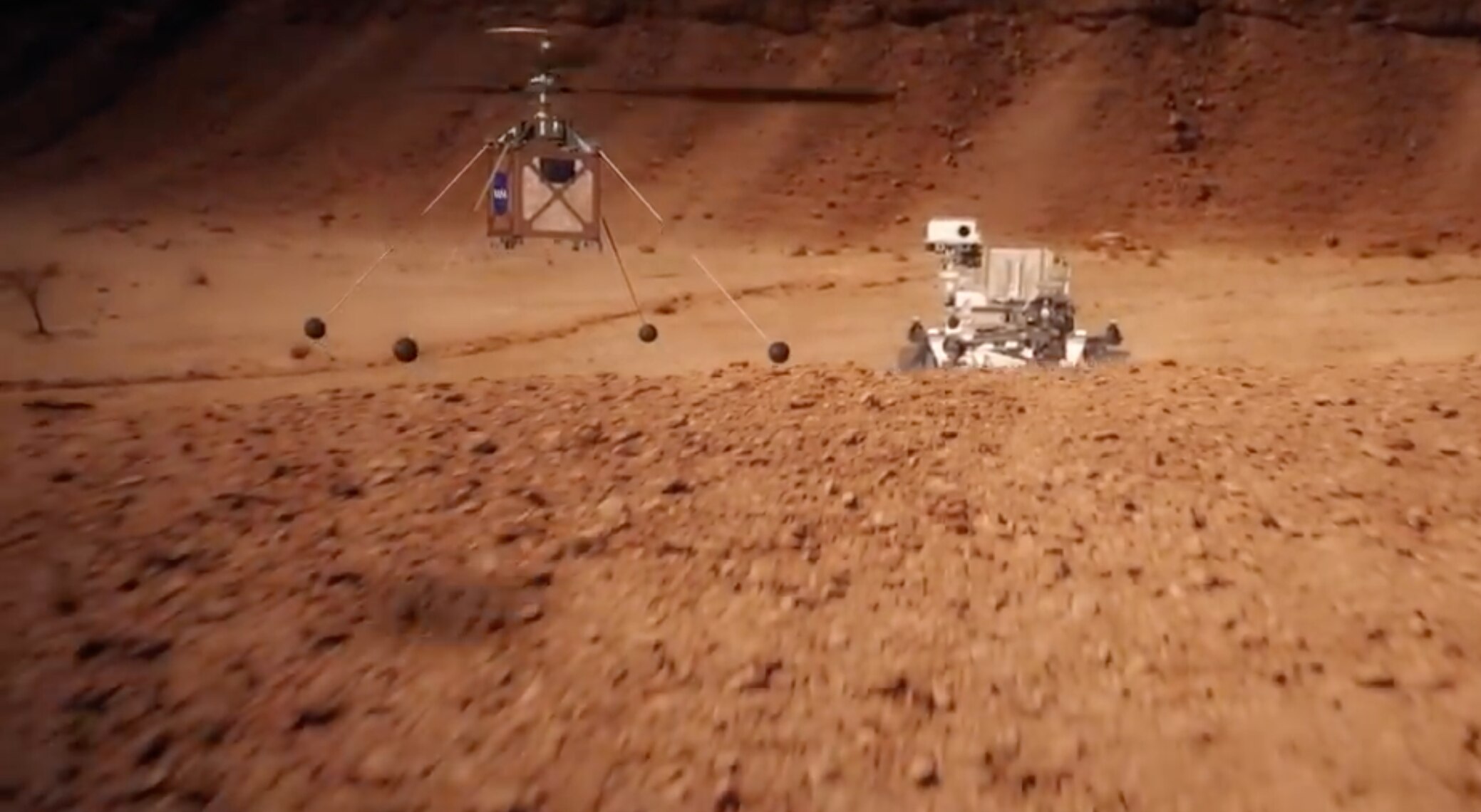Create a free profile to get unlimited access to exclusive videos, sweepstakes, and more!
Helicopters on Mars are going to be a thing

NASA doesn’t just do rockets and rovers. The first flight is destined to happen all over again—on a completely different planet.
The space agency has decided to add a small helicopter to its Mars 2020 rover mission. Engineers at NASA’s Jet Propulsion Laboratory in Pasadena, California, have been trying to figure out how to fly this thing. If it can manage to stay airborne in the Red Planet’s next-to-nothing atmosphere long enough, it will make it possible to explore regions of Mars far from the mothership’s landing site.
“Flying a heavier-than-air vehicle within Mars’ thin atmosphere has never been done before, and we’re excited our aeronautics experts could help with this important space mission,” said Susan Gorton (via NASA), manager for the Revolution Vertical Lift Technology (RVLT) project.
Takeoff is not going to be as easy as it is on Earth. This autonomous rotorcraft will have to put up with freezing nights, avoid crashing in the thin Martian atmosphere, and somehow accomplish all that on its own. Flying will be perilous. At the site where Mars 2020 will land, the air pressure is about the same as that 100,000 feet above Earth. No helicopter launching from our planet has ever gone even half as high.
Because it’s only the size of a softball, weighs barely 4 pounds, and will be equipped with two sets of 4-foot-long rotor blades whirling furiously at 2,400 rotations per minute (around 10 times faster than anything you’d find on the home planet), this helicopter will make it up to 15 feet above the Martian surface.
“When a vehicle goes to Mars it’s going to have to operate autonomously. When it gets there the whole control system and everything that makes it fly must be tuned so that it can fly on its own, which this final round of testing addressed,” Gorton explained.
Though the Mars Helicopter isn’t made for this planet, its autonomous technology is going to be useful when flying taxis go mainstream. Unmanned vehicles zooming around a city are going to have to think for themselves with their computer brains, whether or not they’re carrying human passengers. That means knowing exactly what to do in some potentially risky situations.
Autonomous vehicles flying through our sky will have to watch out for sudden blasts of wind, other vehicles they could potentially crash into, and (of course) technical difficulties. The Mars Helicopter may not have to deal with any of that, but it will be subject to atmospheric changes that might force it to power off and land immediately.
If the micro-copter really does make it through, more helicopters could be hitching a ride on future Mars landers and rovers to check out the Red Planet. There will have to be some air traffic control system at that point—but let’s actually get there first.
(via NASA)



























